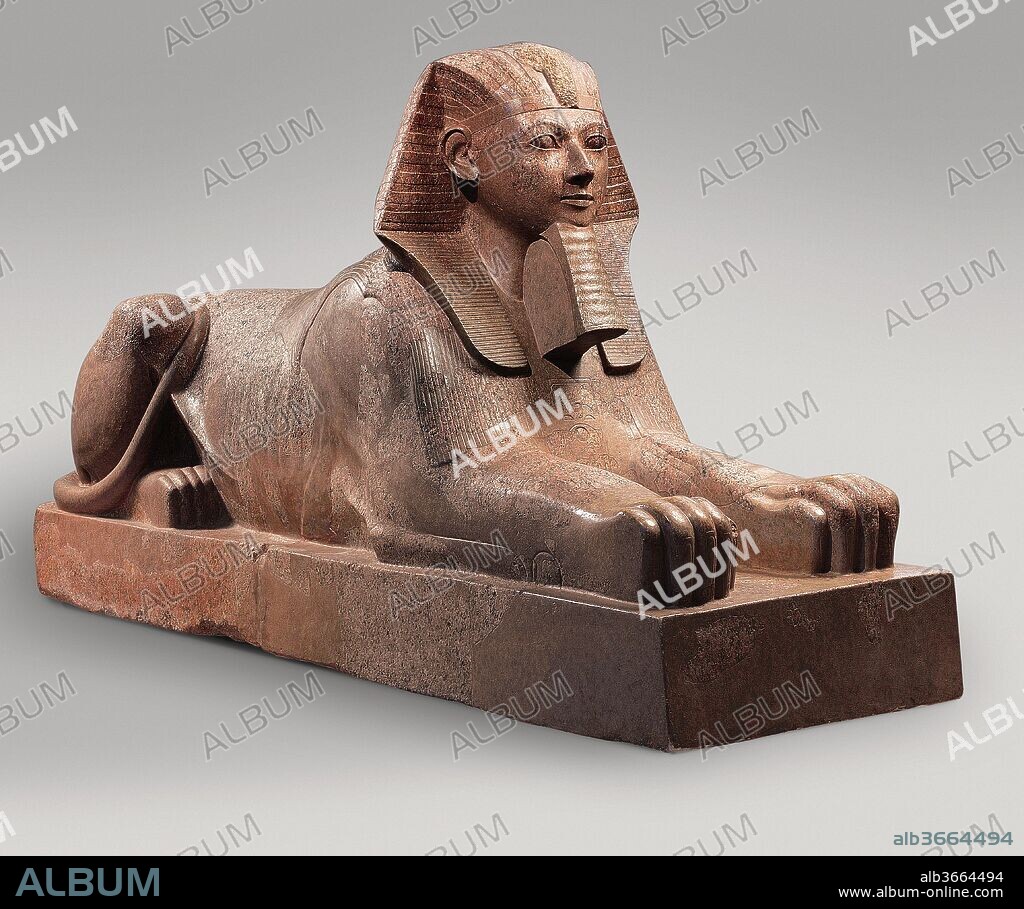alb3664494
Sphinx of Hatshepsut

|
Ajouter à une autre Lightbox |
|
Ajouter à une autre Lightbox |



Avez-vous déjà un compte? S'identifier
Vous n'avez pas de compte ? S'inscrire
Acheter cette image

Titre:
Sphinx of Hatshepsut
Légende:
Voir la traduction automatique
Sphinx of Hatshepsut. Dimensions: H: 164 cm (64 9/16 in.); L: 343 cm (135 1/16 in.); Wt: 6758.6 kg (14900 lb.). Dynasty: Dynasty 18. Reign: Joint reign of Hatshepsut and Thutmose III. Date: ca. 1479-1458 B.C..
This colossal sphinx portrays the female pharaoh Hatshepsut with the body of a lion and a human head wearing a nemes headcloth and royal beard. The sculptor has carefully observed the powerful muscles of the lion as contrasted to the handsome, idealized face of the pharaoh. It was one of at least six granite sphinxes that stood in Hatshepsut's mortuary temple at Deir el-Bahri. Smashed into many fragments at the order of Hatshepsut's nephew and successor Thutmose III and dumped in a quarry close by, this beast was recovered by the Museum's Egyptian Expedition and reassembled. It weighs more than seven tons.
Part of a second sphinx of Hatshepsut (31.3.164) is on display in gallery 115. The sphinx has a long history in Egyptian art, the most famous example being the great sphinx at Giza which represents the Fourth Dynasty King Khafre who lived almost a thousand years before Hatshsepsut. Sphinxes representing other pharaohs may be seen throughout the Egyptian galleries.
Technique/matériel:
Granite, paint
Période:
NEW KINGDOM
Musée:
Metropolitan Museum of Art, New York, USA
Crédit:
Album / Metropolitan Museum of Art, NY
Autorisations:
Modèle: Non - Propriété: Non
Questions sur les droits?
Questions sur les droits?
Taille de l'image:
2981 x 2491 px | 21.2 MB
Taille d'impression:
25.2 x 21.1 cm | 9.9 x 8.3 in (300 dpi)
 Pinterest
Pinterest Twitter
Twitter Facebook
Facebook Copier le lien
Copier le lien Email
Email
